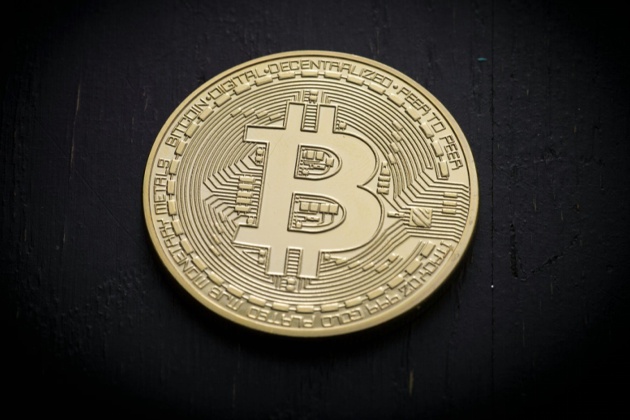Bitcoin has gone from being a niche digital currency to a mainstream financial tool that both private citizens and institutions take seriously. Now Congress is pushing to make sure the federal government takes it just as seriously by requiring the U.S. Treasury to put together a plan for a federal Bitcoin Reserve. This marks a turning point in how Washington approaches digital assets and shows that lawmakers see Bitcoin not just as an investment but as something with national strategic importance.
Potential for Clearer Rules Across the Board
A federal plan like this could also lead to clearer rules across the board, which is something many in the crypto space have been waiting for. People are already using cryptocurrencies every day for more than just investments. They are shopping online, sending quick and low-cost cross-border payments, and even playing at the best Bitcoin casino in the USA, which often offers larger game libraries, better bonuses, and tighter security than traditional platforms.
Without clear regulatory guidelines, both businesses and consumers have faced uncertainty, but a structured federal approach could bring more stability to the market and encourage even wider adoption.
Congress Orders a 90-Day Treasury Report
At the heart of Congress’s push is a requirement for the Treasury Department to draft a comprehensive plan within 90 days. This report will cover how federal Bitcoin is stored, how it’s legally recognized, and how security will be handled.
The fact that this is now included in the latest appropriations bill shows that lawmakers want to treat digital asset storage the same way they treat other forms of national infrastructure. The Treasury is being told to not only address custody architecture and legal authority but also coordinate across agencies and set a standard that private industry might later adopt.
Part of this task is about creating consistency. Right now, the government holds hundreds of thousands of Bitcoin seized through enforcement actions, but there is no single standardized system for managing those holdings. In the past, these coins were often auctioned off. The new direction flips that approach, treating Bitcoin more like gold in a vault than an asset to liquidate. The Treasury will have to determine how Bitcoin appears on balance sheets, how third-party custodians may be used, and what happens to proceeds tied to enforcement funds.
Trump’s Executive Order as the Starting Point
The idea of a federal Bitcoin Reserve did not just come out of nowhere. Earlier in the year, President Trump signed an executive order that set the groundwork for this policy shift. That order introduced the concept of building a strategic reserve from confiscated digital assets, but it did not provide much detail about how it would work in practice. By requiring a full feasibility plan now, Congress is essentially filling in the gaps and making sure the strategy has a clear legal and operational foundation.
The government currently holds between 198,000 and 207,000 Bitcoin, which, depending on market prices, could be worth as much as $20 billion. These assets are no longer being viewed simply as something to liquidate for cash. Instead, they are being treated as a long-term reserve that has potential strategic value.
The classified side of the upcoming Treasury report will deal with national security issues and will be prepared in partnership with the National Security Agency. This part of the process suggests that the government sees digital assets as something that could have implications beyond finance, touching areas like cybersecurity and global stability.
States Already Moving on Their Own
A federal Bitcoin Reserve plan could also influence how states handle their own digital assets. Some states are already moving ahead with similar policies. Texas, for example, has implemented a reserve under its own legislation, while Arizona and New Hampshire have passed laws supporting digital asset investments.
In total, 16 states have introduced legislation tied to Bitcoin reserves this year alone. This shows a growing alignment across different levels of government and highlights the fact that digital assets are being integrated into public policy in a way they never were before.
A Global Race for Bitcoin Reserves
The U.S. is not the only country moving in this direction. China holds a large reserve of Bitcoin obtained through enforcement, Bhutan has accumulated holdings through sustainable mining, and El Salvador, even after stepping back from Bitcoin as legal tender, has kept its coins. Other nations, such as Russia and Brazil, are exploring reserves as a way to manage geopolitical risks.
Japan, Poland, and even smaller countries like the Czech Republic are now debating similar policies. Taken together, this forms a global trend where Bitcoin is being treated more like a sovereign asset class, much like foreign currency reserves or precious metals.
For the U.S., entering this race is partly about not falling behind. Digital assets are becoming a larger part of global finance, and nations are figuring out how to use them to strengthen their economic and strategic positions. By creating a federal Bitcoin Reserve, the U.S. is signaling that it wants to lead rather than play catch-up. The policy could reshape how digital assets are governed domestically while giving the U.S. a stronger voice in international discussions about crypto regulation and security.
Shifting Views on Bitcoin
What makes this development particularly significant is how it reflects the evolving view of Bitcoin itself. For years, it was seen mostly as a speculative asset, something for private investors and traders.
By positioning it as a strategic reserve, lawmakers are putting it in the same category as gold or petroleum, which are both essential to national security and financial stability. This shift could influence everything from how institutions allocate digital assets to how everyday Americans perceive and use Bitcoin.
At the same time, challenges remain. There are legal hurdles to overcome, risks tied to custody and key management, and the question of how much transparency the government will provide in handling these assets. The Treasury report will need to address all of these, and while it won’t answer every question right away, it will set the stage for the policies that follow. If successful, this framework could make the U.S. a leader in digital asset governance and create ripple effects across the financial sector.
What It Means for the Future
For businesses and consumers, the outcome of this plan could determine how smooth or complex it becomes to interact with digital assets in the future. If the standards are clear and practical, it might encourage more companies to accept Bitcoin payments and integrate crypto into their services.
For consumers, that could mean greater confidence in using Bitcoin not just for investments but for everyday activities. Also, for the broader financial system, it could help reduce uncertainty and build a more stable environment where innovation can flourish.
Conclusion
Bitcoin has always represented both opportunity and challenge. By moving forward with a federal Bitcoin Reserve plan, Congress is signaling that the government is ready to embrace digital assets as part of the national infrastructure. Whether this creates new levels of financial security, helps shape global leadership, or simply brings more clarity to everyday users, it represents a major step in the way the U.S. treats Bitcoin.










